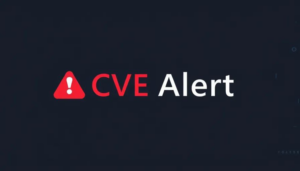CVE Alert: CVE-2007-0671 – n/a – n/a
CVE-2007-0671
Unspecified vulnerability in Microsoft Excel 2000, XP, 2003, and 2004 for Mac, and possibly other Office products, allows remote user-assisted attackers to execute arbitrary code via unknown attack vectors, as demonstrated by Exploit-MSExcel.h in targeted zero-day attacks.
https://oval.cisecurity.org/repository/search/definition/oval%3Aorg.mitre.oval%3Adef%3A301
http://osvdb.org/31901
http://www.microsoft.com/technet/security/advisory/932553.mspx
http://www.kb.cert.org/vuls/id/613740
http://securitytracker.com/id?1017584
http://www.avertlabs.com/research/blog/?p=191
http://secunia.com/advisories/24008
http://www.us-cert.gov/cas/techalerts/TA07-044A.html
https://docs.microsoft.com/en-us/security-updates/securitybulletins/2007/ms07-015
https://exchange.xforce.ibmcloud.com/vulnerabilities/32178
http://vil.nai.com/vil/content/v_141393.htm
http://www.securityfocus.com/bid/22383
AI Summary Analysis
**Risk verdict**: High risk with active exploitation in targeted campaigns; treat as priority 1 due to KEV listing and exploit state.
**Why this matters**: The flaw enables remote code execution with user interaction, potentially granting attackers full control of affected hosts. In organisations using Office on Windows, this can enable rapid malware deployment, data exfiltration, and footholds across the network, increasing risk to finance, HR, and intellectual property assets.
**Most likely attack path**: Attackers deliver a malicious Excel document over the network (phishing or shared files); user must open or enable content, triggering arbitrary code execution. With no privileges required and low attack complexity, a single user session can compromise the host; post-exploitation, lateral movement is possible if segmentation is weak and credentials are harvested or reused.
**Who is most exposed**: Organisations with legacy Excel/Office deployments (2000–2004 era) on Windows desktops, including environments that enable macros or receive external documents via email or collaboration tools.
**Detection ideas**:
- Suspicious Excel process spikes and outbound network connections from Office processes
- Memory dumps or shellcode patterns associated with Exploit-MSExcel.h
- Unexpected macro-enabled documents arriving from external sources
- Anomalous file hashes or attachment patterns for Excel files
- Internal alerts for targeted zero-day exploitation indicators
**Mitigation and prioritisation**:
- Patch immediately with the MS07-015 update; verify deployment across all affected Office versions
- Disable macros by policy; restrict “Enable Content” prompts for unsanctioned documents
- Implement email/file screening and sandboxing for incoming attachments; enforce allow-listing of Office documents
- Strengthen endpoint controls: network segmentation, least privilege, and robust EDR/IR capabilities
- If patching lags, apply compensating controls and escalate patch deployment as a critical change; treat as priority 1 given KEV and exploitation state.
A considerable amount of time and effort goes into maintaining this website, creating backend automation and creating new features and content for you to make actionable intelligence decisions. Everyone that supports the site helps enable new functionality.
If you like the site, please support us on “Patreon” or “Buy Me A Coffee” using the buttons below
To keep up to date follow us on the below channels.


